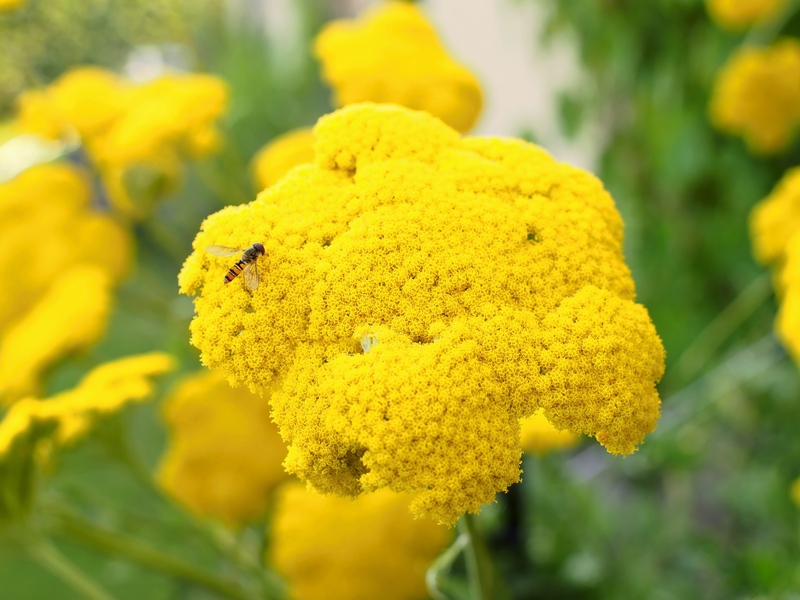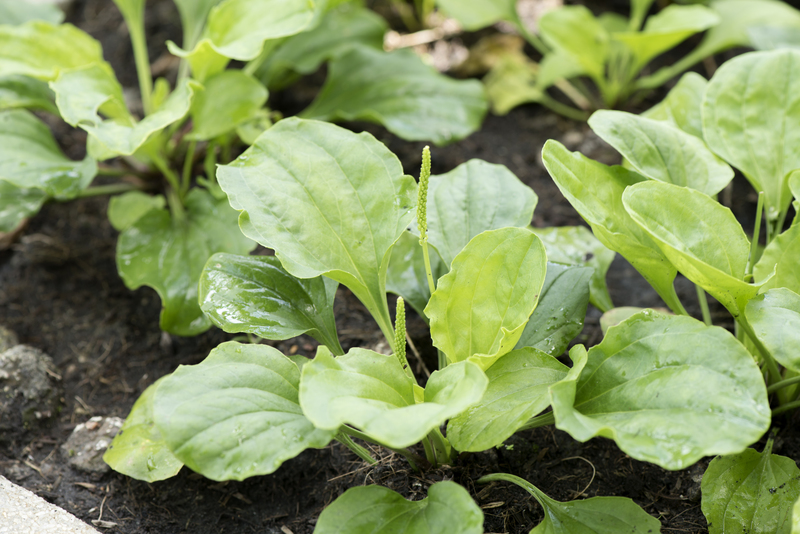Discovering Your Roadmap to Transform a Neglected Garden
Posted on 22/08/2025
Discovering Your Roadmap to Transform a Neglected Garden
Transforming a neglected garden into a lush, inviting space is not just a dream; it is an achievable goal for anyone willing to invest time, imagination, and a little hard work. Whether you have inherited an overgrown yard, bought a home with an abandoned patch of land, or simply let your own green oasis slip into disrepair, this comprehensive guide will help you uncover the steps to revitalize and reinvent your outdoor space. Read on to discover your personalized pathway for a stunning garden transformation!

Why Transform a Neglected Garden?
Neglected gardens often represent missed opportunities. A vibrant and well-kept garden offers numerous benefits:
- Enhanced Curb Appeal: Beautiful gardens increase your property's value and make a welcoming first impression.
- Improved Mental Health: Being surrounded by greenery and flowers is proven to reduce stress and boost mood.
- Sustainable Living: A transformed garden can become a source of food, herbs, and even a haven for local wildlife.
- Personal Satisfaction: Watching your garden thrive brings immense joy and a sense of accomplishment.
The Essential Roadmap to Revitalizing a Neglected Garden
Creating a roadmap for rejuvenating a neglected outdoor space ensures you stay focused, organized, and motivated. Let's break the process down step by step.
Step 1: Assess the Current State of Your Garden
- Walkthrough: Take an honest walk around your garden. Note what is thriving, what is struggling, and what is completely out of control or overgrown.
- Make a List: Write down unwanted features (broken furniture, dead trees, weeds), as well as potential assets (mature trees, stone paths, hidden bulbs).
- Photographic Documentation: Capture 'before' photos to track your progress and inspire your journey.
Step 2: Declutter and Clean Up
An effective garden transformation begins with a thorough clean-up. This vital step lays the groundwork for further improvements:
- Remove Debris: Clear leaves, trash, and any rotting plant material.
- Prune Overgrowth: Cut back overgrown shrubs and trees, being careful not to remove healthy branches needlessly.
- Weed Thoroughly: Pull out unwanted weeds and invasive plants by their roots to avoid regrowth.
- Mow and Edge: If you have a lawn, mow it and neaten up the edges to instantly reveal your garden's potential.
Step 3: Analyze Your Soil and Drainage
Healthy gardens need solid foundations. Check if your soil is suitable for planting:
- Soil Test: Buy a simple soil testing kit to check pH, drainage, and fertility.
- Mulch and Amend: Add compost, manure, or mulch as needed to restore nutrients and improve soil structure.
- Address Drainage Issues: If certain areas are waterlogged or bone dry, consider installing drainage solutions or grading the land.
Step 4: Create Your Garden Plan and Vision
Map out your new garden based on your aspirations and the site's conditions.
- Design Inspiration: Browse gardening magazines, websites, or local gardens for ideas that fit your style and space.
- Draw a Simple Plan: Sketch your garden's layout, marking existing features and designating zones for flowers, veggies, seating, and paths.
- Choose Plants Wisely: Select species that suit your climate, soil, and the amount of sunlight your garden receives. Native plants often require less attention and thrive better.
- Consider Future Maintenance: Plan for a manageable design by balancing ambitious ideas with realistic care routines.
Advanced Steps in Transforming a Neglected Garden
Step 5: Rejuvenate or Replace Hardscapes
Hardscapes are the non-plant elements--paths, patios, fences--that define your garden's structure.
- Repair or Install Pathways: Fix broken stone or brick paths and consider adding new ones to guide the flow.
- Upgrade Seating Areas: Refurbish or replace benches, decks, or patios for comfort and usability.
- Fencing and Borders: Repaint, repair, or replace fences to improve privacy and appearance. Define beds with crisp edges for a tidy look.
Step 6: Begin Planting and Replanting
Timing is crucial--most planting is best done in spring or fall. Here's how to approach it:
- Layer Planting: Create structure with trees and shrubs, then add perennials, annuals, and ground covers for diversity.
- Group by Need: Place plants with similar water, sun, and soil preferences together to simplify care.
- Rejuvenate Existing Plants: Divide crowded perennials and relocate those that might fare better elsewhere.
Step 7: Install an Efficient Irrigation System
A neglected garden often suffers from inconsistent watering. Reduce maintenance and improve plant health with:
- Drip Irrigation: Delivers water directly to plant roots and limits waste.
- Soaker Hoses or Sprinklers: Ideal for larger gardens or lawns.
- Rain Barrels: Collect rainwater for eco-friendly irrigation.
Step 8: Add Decorative Elements and Personal Touches
- Garden Art: Include sculptures, birdbaths, or mosaics for character.
- Lighting: Install solar or low-voltage lights to showcase your garden after dark and provide security.
- Wildlife Features: Add bird feeders, butterfly houses, or a small pond to attract beneficial wildlife.
Maintaining Your Garden After Restoration
Sustaining a revitalized garden takes less work than the initial overhaul but is absolutely critical for lasting beauty:
- Regular Weeding: Stay ahead of weeds before they take hold.
- Pruning and Deadheading: Regularly trim plants and remove spent flowers to encourage growth and blooming.
- Mulching: Recognized as a gardener's best friend, mulch helps retain moisture and suppresses weed growth.
- Seasonal Tasks: Rake leaves in fall, protect tender plants in winter, and fertilize as needed in spring/summer.
- Observation: Walk your garden often to spot problems early and enjoy the progress!
Overcoming Common Challenges in Restoring a Neglected Garden
Dealing With Persistent Weeds
Some gardens have deeply rooted issues--literally! Use a combination of physical removal, mulching, and targeted organic weed killers to control invasive species. Persistence is key.
Reclaiming Spaces Overrun by Ivy or Brambles
For stubborn vines or thorny bushes, cut growth to the ground, dig out roots where possible, and monitor for regrowth. Smothering with cardboard and mulch can help weaken and suppress unwanted plants.
Reviving Poor Lawns
Neglected lawns may be patchy, weedy, or compacted. Aerate the soil, overseed bare spots, fertilize, and water deeply. In severe cases, consider lawn replacement or turning problem areas into flower beds, meadows, or vegetable patches.
Managing Pests and Diseases
Monitor for common garden pests like aphids or snails and treat early with organic methods--hand removal, barriers, or natural predators. Remove diseased plants promptly and choose disease-resistant varieties for replacement.
Inspirational Ideas for Transforming Neglected Gardens
- Wildlife Havens: Plant nectar-rich flowers, install bee hotels, and create a small pond or marshy corner.
- Edible Gardens: Blend vegetables, herbs, and fruit bushes into ornamental beds for a practical, beautiful design.
- Cottage-Style Gardens: Mix perennials, self-seeding annuals, and meandering paths for a romantic, informal feel.
- Minimalist Retreats: Use gravel, drought-tolerant plants, and sleek hardscapes for modern low-maintenance sanctuaries.
Sustainable Gardening: Transforming With Nature in Mind
Eco-friendly practices are increasingly important to consider during your garden renovation journey:
- Composting: Turn garden waste and kitchen scraps into rich, free mulch for your beds.
- Mulching: Use organic materials to improve soil and save water.
- Rainwater Harvesting: Set up barrels or tanks to collect rain for irrigation.
- Native and Pollinator-Friendly Plants: Support biodiversity and reduce maintenance needs by choosing plants adapted to your region.
Budget-Friendly Tips for Garden Revitalization
- Propagate Your Own Plants: Multiply what you already have by taking cuttings, dividing perennials, or swapping with neighbors.
- Reuse and Recycle: Repurpose old bricks, pallets, or containers for new garden features.
- Start Small, Prioritize: Focus on one area at a time to avoid overwhelm and spread costs over time.
- DIY Projects: Build raised beds, compost bins, or trellises to customize your garden on a shoestring.
Your Garden Transformation Journey: From Neglect to Nurture
Restoring a neglected garden is an empowering adventure. With this step-by-step roadmap, you'll move from untamed disarray to a tailored sanctuary that reflects your personality and meets your needs. Remember, every garden is a work in progress. Enjoy each phase, celebrate small victories, and share your success with friends and family.
Whether you dream of a tranquil retreat, productive kitchen garden, or vibrant wildlife haven, the path from neglect to nurture awaits. Start your garden transformation journey today and rediscover the joy of outdoor living!

Frequently Asked Questions About Transforming a Neglected Garden
- How long does it take to renovate a neglected garden?
The timeline varies, but most projects take from a couple of weekends to a full growing season depending on garden size, level of neglect, and your available time and resources. - Is it expensive to revamp a garden?
Costs can be managed by doing work yourself, reusing materials, propagating plants, and focusing on one area at a time. - Where do I start if my garden feels overwhelming?
Begin with clean-up. Break the task into manageable sections and prioritize areas near entrances or frequently used spaces for a quick morale boost. - How can I keep weeds from returning?
Regular maintenance, mulching, and planting densely help suppress weeds. Promptly remove any new invaders as they appear. - What should I do with plants I don't recognize?
Use plant ID apps or consult a local garden center. Unknown plants might be valuable or invasive, so identification helps you decide what to keep or remove.
Conclusion: Your Roadmap to a Renewed Garden
Transforming your neglected garden is a rewarding venture, yielding more than just a pretty view. It invites you to connect with nature, nurture your creativity, and establish a unique patch of paradise for relaxation and entertainment. With vision, planning, and perseverance, you can breathe new life into any outdoor space--one step at a time. Get started now and watch your garden, and your own sense of satisfaction, grow!

